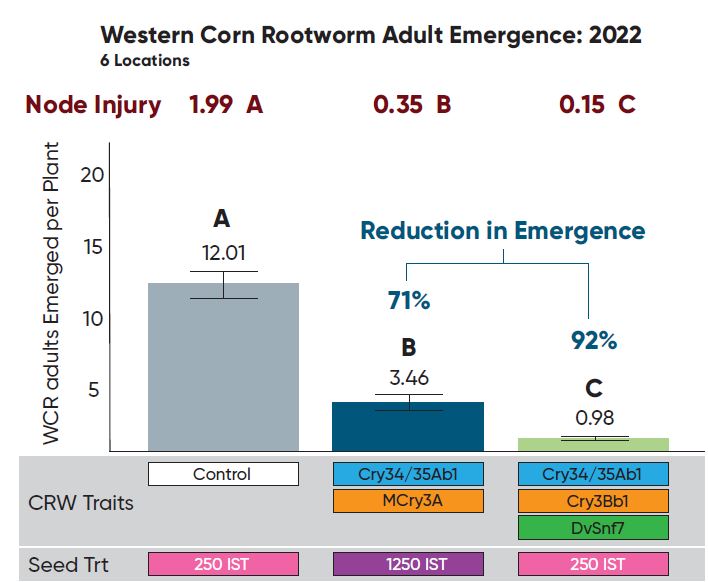Skip Navigation
Jim Bing, Program Leader, Insect Control Traits, Tim Nowatzki, Senior Research Scientist, Tim Mabry, Field Scientist, Jeff Klever, Staff Associate Investigator, and Mark Jeschke, Agronomy Manager
Ribonucleic acid interference (RNAi) technology has been commercialized to provide an additional unique mode of action for protection against corn rootworm and is available in Corteva Agriscience seed brands in Vorceed™ Enlist® corn.
Figure 1. Vorceed Enlist corn contains three modes of action for protection against corn rootworm
Table 1. Corn rootworm treatments compared in 2022 adult emergence experiments.
Figure 2. Emergence cage used to capture corn rootworm adults emerging from the soil.

Figure 3. Western corn rootworm adult emergence (beetles/plant). Bars and values with the same letter are not significantly different at α = 0.05.
1. Plant the Required Refuge
2. Rotate Crops
3. Rotate Traits
Manage CRW With Insecticides
Agrisure® is a registered trademark of, and used under license from, a Syngenta Group Company. Agrisure® technology incorporated into these seeds is commercialized under a license from Syngenta Crop Protection AG. Roundup Ready® is a registered trademark used under license from Monsanto Company. Liberty®, LibertyLink® and the Water Droplet Design are trademarks of BASF.
The foregoing is provided for informational use only. Please contact your sales professional for information and suggestions specific to your operation. 2020-2022 data are based on average of all comparisons made in 23 locations through Dec 1, 2022. Multi-year and multi-location is a better predictor of future performance. Do not use these or any other data from a limited number of trials as a significant factor in product selection. Product responses are variable and subject to a variety of environmental, disease, and pest pressures. Individual results may vary. RU231005